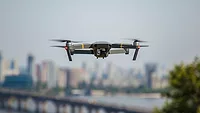5 Steps to Boost K-12 School Security through Environmental Design
Crime Prevention Through Environmental Design – better known as CPTED – is a multi-disciplinary approach to preventing crime through the thoughtful design of an environment. CPTED principles can be applied in places ranging from retail stores and hotels to public parks and schools to enhance safety both inside and outside a facility.
CPTED is based on five strategic principles:
- Natural surveillance
- Access management
- Territoriality
- Physical maintenance
- Order maintenance
Although many of these principles can be applied using practical actions such as thoughtful placement of lights and shrubbery, behavior policies and other such programs and tasks, security technology plays a decisive role in creating and sustaining a safe school environment. Here are some ideas for simple, cost-effective and smart solutions that support many of the CPTED principles.
Natural Surveillance
Natural surveillance is as simple as placing physical features in a manner that maximizes visibility. A good example is placing the school’s front office right at the entrance. This lets staff easily see who is at the front door. Planting vegetation away from the building so that shrubbery and trees don’t interfere with an occupant’s view out the room’s window is another example.
Good natural surveillance gets enhanced with an access control system that integrates components such as digital video cameras and an intercom with a microphone that is linked to a buzzer in the main office. This combination of design principles and a practical approach to security technology can help your staff control who goes where and when, while maintaining constant awareness of who is in or who has left the building.
Here are a few more basic, simple tips that will help you improve your natural surveillance:
- Use a single, clearly identifiable point of entry to the building.
- Plant low, thorny bushes beneath ground-level windows.
- Eliminate design features that provide access to roofs or upper levels.
Access Management
When it comes to CPTED, access management is about guiding people, or managing human traffic, by using signs, well-marked exits and strategically placed landscaping. Access management can even include subtle tactics like using landscaping to limit access to unsupervised locations on facility grounds.
Lower cost mechanical solutions like high-security keys can help control access to places like storage, equipment and utility rooms. Electronic access control solutions – stand-alone or networked, hard-wired or wireless – deliver enhanced security with an audit trail that lets property managers look back to see who has accessed a door and when.
Here are some ideas for improving access management:
- Assign visitors a badge or name tag when they enter the building and require it to be returned before leaving.
- Keep staff and public parking separate from the area designated for bus and parent drop-off. Make sure signage clearly identifies these areas.
- Keep all exterior doors locked from the outside during school hours, with the exception of the main entrance, to prevent people from entering the building without the office staff being aware.
Territoriality
Territoriality creates a clear definition between public and private spaces without disrupting the environment. It creates a sense of community within such spaces. Both inside and outside a building, space can be defined through signage, building material colors or decorative features. Consider an elementary school. Fostering a sense of community and pride comes from creating a welcoming atmosphere that puts students and school values or employees and company missions at the forefront. Some examples are displays of children’s artwork and use of school colors to help make students, staff and visitors feel invested in “ownership” of the space. Companies may want to post company awards, employee achievements and motivational slogans.
Here are a few tips that will help you enhance territorial reinforcement:
- Maintain premises and landscaping so that it communicates an engaged and active presence.
- Display security system signage at access points.
- Schedule public activities in common areas while restricting public access to private areas.
Physical Maintenance
Although physical maintenance can sometimes seem costly, it’s an important part of maintaining a safe and comfortable environment that deters crime. The principles of CPTED focus on removing graffiti as quickly as possible, keeping restrooms in good repair, promptly changing bulbs or repairing light fixtures, and maintaining well-lit and clean stairwells.
But security technology is also a component of physical maintenance and keeping your equipment well maintained will ensure optimal performance. Door hardware like exit devices, locks and closures usually take a beating in a school and other facilities. Doing regular maintenance checks will ensure that these components continue to operate properly so that doors latch securely, open and close smoothly, and work properly to enable fast lockdown or egress when needed.
Electronic security technology may also require software updates, reprogramming after personnel changes, battery changes or other checks to assure reliable maintenance. Work with your security provider to identify important maintenance needs and develop a plan to stay up to date.
Here are some ideas for managing your physical maintenance:
- Run the numbers – often the cost of maintenance is much less than the cost of replacement. Keeping up on maintenance can significantly improve the long-term cost of ownership for everything from bathroom stalls to door hardware.
- Delegate if resources allow. Larger campuses may want to partner with an outside resource like a locksmith or a security dealer for maintenance of door hardware and locks.
Accountability
Accountability revolves around personal behavior and the expectations and consequences that go with it. This requires policies about unacceptable behavior and attending to minor unacceptable acts promptly. For instance, in schools, tactics like maintaining an obvious adult presence during all times that children transition from one location to another is a good example of how to promote a sense of safety and supervision while enabling rules to be enforced on the spot when needed.
Crime Prevention through Environmental Design is not a new idea. Its most basic concepts were first explored by criminologists in the early 1960s, and the term CPTED was coined in 1971. Over time, its principles and practices have been refined and adapted to fit the school and business environments. All organizations can benefit from the principles of CPTED in a variety of ways.
Likewise, security technology is not a new idea. But, as technology has become more sophisticated and less expensive, even the smallest school districts, factories and offices are able to invest in better and more effective access management systems. Implementing the right security technology for the specific facility can also provide a host of benefits:
- More control over who goes where and when.
- Decreased incidence of unauthorized entry into the building.
- Faster and easier adjustments to access privileges when there are personnel changes.
- The possibility of fast, effective lockdown from a central location.
- Improved safety and control of door opening and closing.
- Enhanced safety and security for all occupants.
By merging access control plans into a CPTED program will keep facilities and its people safe and secure at an affordable cost.
Looking for a reprint of this article?
From high-res PDFs to custom plaques, order your copy today!






